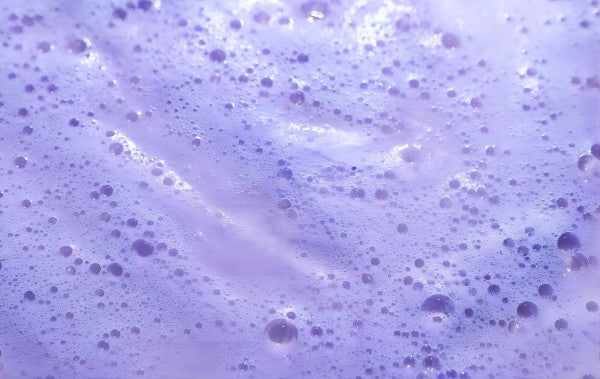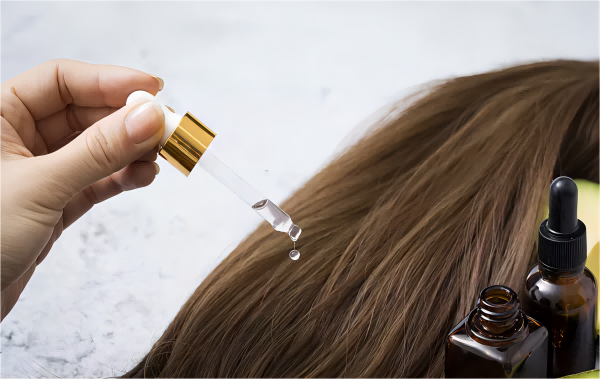Today, let's dive into one of the most popular questions swirling around the world of extensions: How long do those tape-ins actually last? Buckle up, because I'm about to lay down some serious knowledge bombs.
1. Factors Influencing Tape-In Hair Extension Lifespan:
Quality of the Extensions:
- When it comes to tape-in hair extensions, not all products are created equal. Higher-quality extensions are typically made from 100% human hair, which offers a more natural look and feel compared to synthetic alternatives. Additionally, ethically-sourced hair ensures that the extensions are obtained responsibly and sustainably, without exploiting human or animal rights. These high-quality extensions are processed using advanced techniques that maintain the integrity of the hair cuticles, resulting in stronger and more durable adhesive bonds. Investing in top-notch extensions may require a higher upfront cost, but it pays off in the long run with a longer lifespan and better overall quality.
Proper Installation:
- The way tape-in extensions are installed can significantly impact their lifespan. It's crucial to have the extensions applied by a skilled and experienced stylist who understands the proper technique. During installation, the stylist should ensure that the extensions are placed close to the scalp without pulling or tugging on the natural hair. They should also use the right amount of adhesive to create secure bonds that will withstand daily wear and tear. Improper installation can lead to loose or uneven bonds, which are more prone to damage and may require early removal or replacement.
Hair Care Routine:
- Maintaining tape-in extensions requires a tailored hair care routine that prioritizes gentle treatment and nourishment. Using sulfate-free shampoos and conditioners is essential, as sulfates can strip the hair of its natural oils and weaken the adhesive bonds. Opting for products specifically formulated for extensions can help maintain the integrity of both the extensions and your natural hair. Additionally, minimizing heat styling and exposure to harsh chemicals is crucial for preserving the longevity of the extensions. Heat-protectant products should be used before styling with hot tools, and swimming in chlorinated pools or salt water should be avoided whenever possible to prevent damage and premature loosening of the bonds.
2. Signs That Your Tape-In Hair Extensions Need Replacement:
As much as we'd like our tape-in extensions to last forever, eventually, they'll reach the end of their lifespan.
Loosening Bonds:
- Over time, as your natural hair grows, the adhesive bonds used to attach the tape-in extensions may begin to lose their grip. This can result in the extensions becoming loose or shifting position on the scalp. You may notice that certain sections of your extensions feel less secure or that they move more freely than when they were first installed. Loosening bonds not only compromise the stability of the extensions but can also lead to discomfort and potential damage to your natural hair if left unaddressed.
Visible Damage:
- Visible signs of damage on the extensions, such as fraying or tangling, are clear indicators that they need to be replaced. Frayed ends or tangled strands suggest that the hair fibers have become worn or damaged, compromising the overall quality and appearance of the extensions. Additionally, damaged extensions are more prone to breakage and shedding, which can detract from the seamless and natural look you're aiming to achieve. If you notice significant damage to your tape-in extensions, it's best to schedule a replacement appointment with your stylist to restore the integrity of your hairstyle.
Changes in Texture or Appearance:
- As your natural hair grows and changes over time, the texture and appearance of your hair may evolve, impacting how well the extensions blend with your natural hair. Changes in texture, such as shifts in curl pattern or alterations in thickness, can create discrepancies between your natural hair and the extensions, making them more noticeable or less seamless. Additionally, changes in hair color or highlights may require adjustments to the extensions to maintain a cohesive and harmonious look. If you notice significant disparities between your natural hair and the extensions, it may be time for a touch-up or replacement to ensure a flawless and natural-looking result.
3. Tips for Extending the Lifespan of Tape-In Hair Extensions:
While tape-in hair extensions have a finite lifespan, there are several steps you can take to maximize their longevity and get the most out of your investment.
- Establish a Regular Maintenance Routine:
- Brush the extensions gently at least twice a day using a soft-bristle brush or a loop brush designed specifically for hair extensions to prevent tangling and matting.
- Always brush starting from the ends and gradually work your way up to the roots to minimize pulling and stress on the tapes.
- Schedule Regular Touch-Up Appointments:
- Visit your hairstylist every 4 to 6 weeks to have your extensions checked and re-applied. The natural growth of your hair can cause the extensions to move away from the scalp, leading to tangling and stress on your natural hair.
- During these appointments, your stylist can also remove any extensions that have loosened and replace them if necessary.
- Use Suitable Hair Care Products:
- Avoid products containing sulfates, alcohol, or oil, which can weaken the adhesive bond of the tape and cause the extensions to slip.
- Invest in a high-quality shampoo and conditioner recommended for hair extensions to keep them clean and hydrated without damaging the tape.
- Practice Gentle Styling:
- Apply a heat protectant spray before using hot styling tools like straighteners, curling irons, or blow dryers.
- Use the lowest heat setting possible to style your extensions to prevent heat damage.
- Avoid applying direct heat to the tape tabs to prevent weakening the adhesive.
- Minimize Exposure to Chemicals and Saltwater:
- When swimming in a pool or the ocean, wear a swim cap or keep your hair up to avoid prolonged exposure to chlorine or salt, which can dry out and tangle the hair.
- After swimming, wash and condition your hair immediately to remove any harmful residues.
- Sleeping Care:
- Braid your hair loosely or tie it in a soft ponytail before going to bed to prevent tangling.
- Use a silk or satin pillowcase, which reduces friction and helps prevent tangling and stress on the extensions while you sleep.
4. Frequency of Maintenance and Touch-Ups for Tape-In Extensions:
Maintaining tape-in hair extensions requires a balance between regular maintenance and avoiding overhandling. While it's essential to schedule periodic touch-up appointments with your stylist to maintain the integrity of the extensions and ensure that they remain securely attached, it's also important not to overdo it. Excessive maintenance can put unnecessary strain on your natural hair and the adhesive bonds, potentially shortening the lifespan of the extensions. Your stylist can advise you on the optimal frequency of touch-ups based on factors such as your hair growth rate and styling habits, but as a general rule of thumb, touch-up appointments are typically scheduled every 6-8 weeks.
5. Comparing Tape-In Extension Lifespan with Other Extension Methods:






